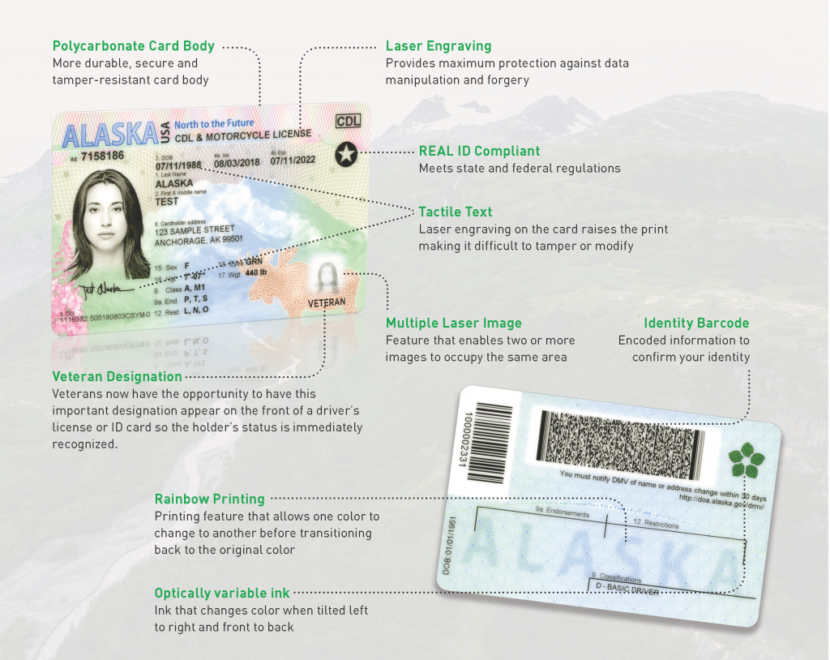
Starting in October, if you want to fly on a commercial flight anywhere in the United States, you will need a federally-compliant REAL ID, or an official alternative like a passport.
Getting one of those IDs requires a lot of documentation and lines at the Department of Motor Vehicles (DMV) can last three hours or longer. And that’s if your community has a DMV in the first place.
Many, if not most, rural residents will need access to flights for medical appointments or emergencies at some point.
“In case of life-threatening emergencies, patients are often medevaced to Anchorage or Seattle. And once they get better and are able to return home, they’ll have to take a regular flight back home,” said Jacqueline Bergstrum, Executive Director of Medical Services for the Tanana Chiefs Conference. “So all these scenarios happen routinely and will require that patients have a compliant ID by Oct. 1 under the current act.”
Bergstrum is concerned that if villagers can’t get REAL IDs, they may get stranded after medical flights.
State lawmakers in the House Tribal Affairs committee heard testimony Thursday, Feb. 20, from Bergstrum and other rural Alaska leaders who are concerned about getting REAL IDs for their communities and want lawmakers to help.
“I do think it’s the Legislature’s job to appropriate funding to ensure that every village in the state of Alaska has somebody going to their community at least once, and providing that as an opportunity, versus a community of 800 people trying to fly into Nome to obtain their REAL ID,” said Melanie Bahnke, CEO of Kawerek, a tribal consortium in the Bering Straits Region.
Even if a village could organize flying everyone who wanted a REAL ID to the nearest hub DMV, it would be expensive. Round trip tickets from surrounding villages to Kotzebue can cost as much as $600.
Charlie Nelson, VP and Tribal Affairs head for Maniilaq Health Consortium based in the Northwest Arctic Borough, says Kotzebue’s DMV hours are very limited since the one person who works there also works as an admin for the local police department. Plus — it’s closed on Wednesdays for road tests.
“Our DMV office is only open for four hours a day,” Nelson said. “When that person is out sick or has other issues, personal and or business, it is usually closed. So we don’t have any direct access to it on a full-time need.”
The state has been trying to solve this problem for awhile now — without much success so far.
Last year, it put out a pitch for Alaskans to donate to the state DMV to get workers out to rural communities, though they’ve since ditched that idea.
Then, there’s a state mobile DMV pilot program that has been going through villages to help get tribal members signed up, though it’s not always on the state’s dime. The village of Eek’s tribal council had to approve their own funds to get state workers to the village. Residents also had to individually foot the $40 bill for their IDs. In New Stuyahok, about a third of residents who applied for a REAL ID were denied, according to the state DMV.
Now, the state has been pushing for residents to use alternatives to the REAL ID when the deadline hits. Those include passports, military IDs and federally-recognized tribal IDs with photos.
State DMV Deputy Director Jenna Wamsganz made a presentation to the sub-committee after the public testimony.
“We know that 350,000 Alaskans have passports, and then 65,000 Alaskans have military IDs, and then about 67,000 Alaskans are eligible for veteran IDs as well,” Wamsganz said.
While it’s unclear how much overlap there is with the alternatives, Wamsganz says currently, 115,000 REAL IDs have been issued to Alaskans.
With the October deadline looming, Rep. Tiffany Zulkosky of Bethel, who chairs the House Tribal Affairs committee, told the DMV representative at the hearing that the department should be more proactive in explaining REAL ID alternatives to tribes.
“If it’s being shared with a group of legislators, it seems like it could be shared as a ‘Dear Tribal Leader’ letter so people know what opportunities there are to meet other standards, specifically if the department is relying on tribal IDs as an alternative option,” Zulkosky said. “That’s something to consider moving forward.”
One more wrinkle is that even with the tribal IDs, tribal officials are concerned that that local Transportation Security Administration (TSA) officials have not all been trained properly on recognizing the various forms of acceptable IDs. Additionally, Bahnke with Kawarek says just because someone is an enrolled tribal member of a tribe, it doesn’t mean they live there.
“I don’t want to be stranded somewhere thinking that the TSA is going to accept my Native Village of Savoonga-issued tribal ID,” Bahnke said. “I’m a state citizen, and I should have the access to a state-issued REAL ID.”
Including the alternatives, the state DMV estimates that about 6,700 rural Alaskans who don’t have a DMV in their community still need help with getting an ID.
Calls made to the state DMV office concerning state outreach went unanswered.
